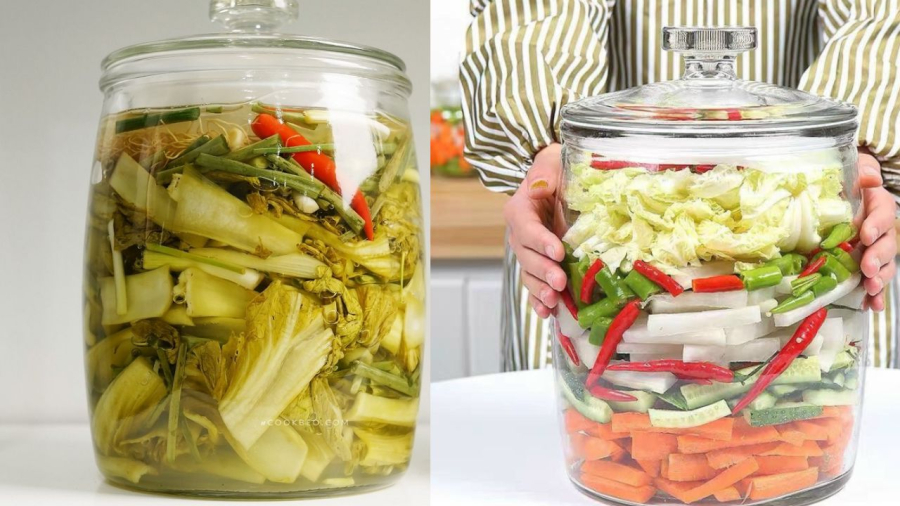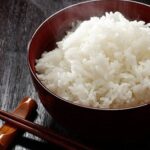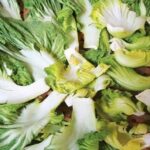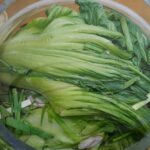There’s a popular saying that goes, “Pickling cucumbers is an art,” suggesting that the quality of the pickled cucumbers depends on the individual doing the pickling. However, the real secret to successful pickling lies in understanding the critical factors involved in the process. Once you master these key points, you’ll be able to consistently produce delicious pickles, regardless of your past failures.
Selecting the Right Vegetables for Pickling
When it comes to pickling cucumbers, various vegetables can be used, including bitter melon (bitter gourd), turnips, cabbage, and cat mustard. However, regardless of the type of vegetable chosen, it’s essential to select ones that are at the right stage of maturity, neither too young nor too old. Overly mature vegetables will result in tough, fibrous pickles, while immature ones will turn out mushy and discolored. It’s also crucial to avoid vegetables that are overly lush, as they may have been overfertilized with nitrogen-based fertilizers, which can affect the taste and even be harmful.

Choose Vegetables That Are Slightly Mature for Pickling
Proper Washing and Preprocessing Techniques to Prevent Spoilage and Mold
To ensure your pickles turn out golden and delicious, free from spoilage and mold, it’s essential to carefully select and preprocess your vegetables. Remove any damaged, bruised, or rotten leaves, and pay close attention to the washing process to avoid bruising the leaves, which can affect the taste. It’s recommended to sun-dry the vegetables to remove excess moisture and achieve a crispier texture. If sun-drying is not possible, let the vegetables air-dry after purchasing before washing them.
When washing the vegetables, soak them in a mild salt solution to ensure they are thoroughly cleaned and to remove any green liquid that may be released during cutting. Wash each vegetable separately to ensure they are thoroughly cleaned. After cutting, rinse them again to eliminate any remaining green liquid, preventing off-flavors and spoilage.

Choose Glass, Ceramic, or Stoneware Containers for Pickling
Choosing the Right Type and Amount of Salt
The type and amount of salt used are critical to the success of your pickles. It’s recommended to use sea salt crystals, which should be dissolved and filtered to remove any sediment. Never use seasoning powder or broth powder, as they can cause spoilage. The right proportion of salt is essential; too much or too little will affect the taste. Typically, for every liter of water, use 20-25 grams of salt (about 2-2.5 teaspoons) to pickle one kilogram of vegetables.
Refined salt, which contains 97-99% sodium chloride, often has a bitter, salty taste and can cause discoloration and scum formation. Therefore, it’s best to use sea salt crystals for pickling.
The Importance of the Right Container
When choosing a container for pickling, opt for glass, ceramic, or stoneware. Avoid using plastic containers, as they can leach harmful chemicals and affect the flavor. Make sure to clean and thoroughly dry the container before adding the vegetables.
Ensuring the Pickles Are Fully Submerged
When adding the vegetables to the brine, use a rack to ensure they are completely submerged. Even a single piece of vegetable floating on the surface can introduce bacteria, leading to spoilage, softening, and mold. It can also cause scum formation and mold on the entire batch.
Avoiding Cross-Contamination and Proper Handling
When removing pickles from the container, use clean utensils, especially avoiding those contaminated with oil or food residue. Oil and food residue can cause scum formation, spoilage, and mold. Never return partially consumed pickles to the container, as they may have come into contact with food or oil during consumption.
Additionally, you can speed up the yellowing and souring process by adding clean rice washing water to the brine.
“The Ultimate Guide to Crispy, Golden Fermented Mustard Greens: A Simple, Delicious, and Fuss-Free Recipe”
Pickled cabbage is not just a side dish that tantalizes your taste buds and enhances your meals; it is a versatile ingredient that can be transformed into a myriad of delicious dishes. This article will guide you through the process of creating the perfect pickled cabbage and unlocking a world of culinary possibilities.



































